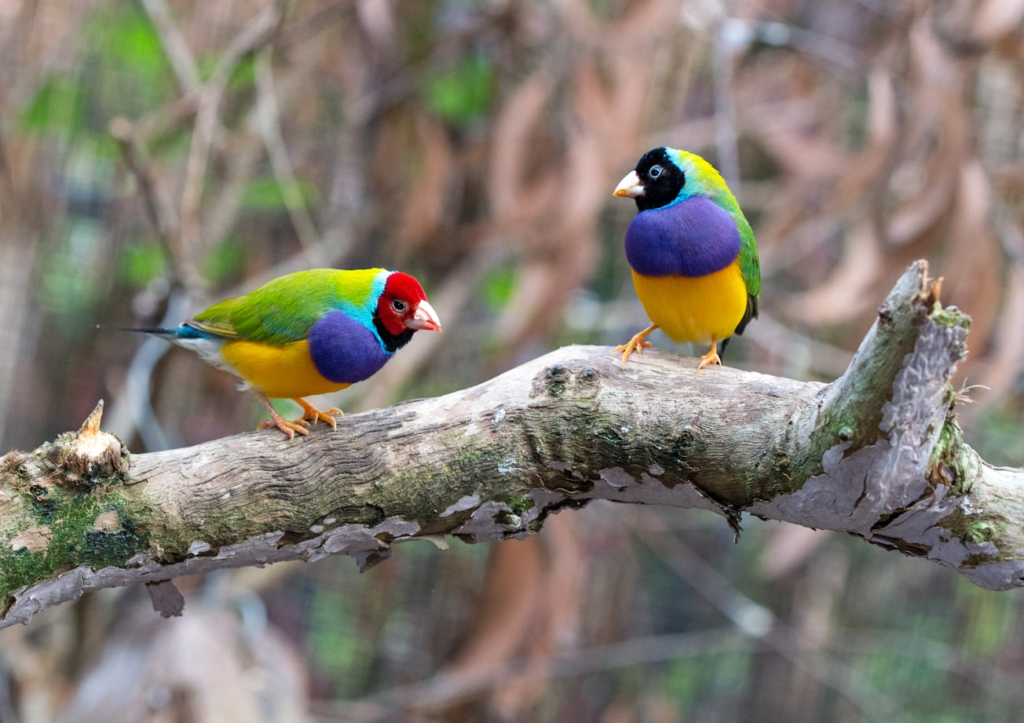Does group composition affect vigilance?
The results of this study demonstrated that group composition did have an effect on vigilance, with mixed colour morphs pairs having the highest level of vigilance. However, there was no difference between individual morphs. When looking at the differences in vigilance across the three situations, mixed colour morph pairs performed the highest number of head movements in the ‘new’ and ‘familiar’ situation, with the highest number of movements in the ‘new’ situation. On the other hand, black-headed pairs were shown to have a higher level of vigilance in the ‘neophobic’ situation. Interestingly, there was no difference in vigilance across the three situations for red-headed pairs.
These results are similar to Mettke-Hofmann’s paper in 2021 and in 2022. However, the cause in increased vigilance in mixed morphs groups is not fully understood and one possible explanation put forward is the conspicuous colouring of the red-headed morph.
Does group composition affect stress?
Regarding stress, neither group composition nor colour morph had an effect on stress, but the introduction of a novel object did induce a stress response. This contradicts other studies that found darker morphs tended to have a lower stress response than the brighter and more conspicious morphs. Furthermore, studies on Gouldian finches have also shown that red-headed morphs are more susceptible to stress.
The results here could have been affected by a number of factors such as lack of temperature points as birds were prone to being outside the camera’s field of view. Head orientation has also been show to influence results and some studies have shown that the eye region may not always be the best area to extract temperature readings from. Therefore, it is recommended that further testing be done regarding thermal analysis on these birds to better understand what is the best non-invasive method.
Are red-heads more risk-averse than black-heads?
There was no difference between red-headed morphs and black-headed morphs in terms of risk-aversion and exploration behaviour. Other studies have shown that the conspicuous morph of other species tend to be more risk-averse and less likely to approach novel objects, which was not seen in this study. This might have been due to the birds being exposed to a previous stressor – in this case being human presence as the novel object was placed into the cage – causing intense neophobia and affecting the time it would have taken to approach and return to feeding. This ties in with a another possible explanation where a study found that the personality of one individual could affect the personality of their partner’s. Therefore, if one individual was bolder then their partner tended to be bolder as well and so forth.
